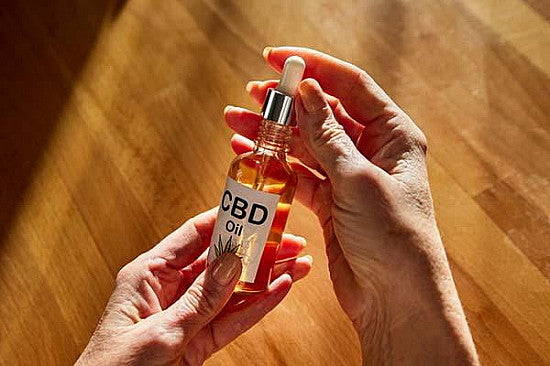
Can You Build a Tolerance to CBD or THC? How to Manage the Tolerance?
Share
Can You Build a Tolerance to CBD or THC?
If you’re a regular user of CBD or THC, you may have noticed that the effects sometimes feel different over time. This raises a common question: Can your body build a tolerance to cannabinoids—and if so, what can you do about it? Let’s explore what the science says and how to manage tolerance in a mindful way.
Understanding Tolerance
Tolerance is the body’s way of adapting to repeated exposure to a compound. When it comes to cannabis, tolerance usually refers to needing more of a product to feel the same effects you once did.
-
THC (tetrahydrocannabinol): Research shows that THC tolerance is well documented. A 2016 review in Biological Psychiatry found that repeated THC exposure can cause downregulation (reduced activity) of CB1 receptors in the brain—meaning those receptors become less responsive over time. This is why frequent THC users often report needing higher doses.
-
CBD (cannabidiol): CBD interacts with the endocannabinoid system differently. Instead of directly binding to receptors like THC, CBD is thought to modulate them indirectly while also influencing serotonin, adenosine, and TRPV1 receptors. Because of this, tolerance to CBD appears to be far less pronounced. Still, some users report a “plateau effect” where benefits feel reduced after daily use.
Why Tolerance Happens
Your body is always working toward homeostasis, or internal balance. When cannabinoids are introduced regularly, the body may:
- Produce fewer natural endocannabinoids.
- Reduce the sensitivity of receptors (especially CB1 with THC).
- Rewire certain signaling pathways to restore equilibrium.
This adaptation doesn’t mean cannabinoids “stop working”—just that your system has temporarily adjusted.
5 Strategies to Manage Tolerance
If you feel your CBD or THC products aren’t working as effectively, here are evidence-informed ways to reset your endocannabinoid system:
1. Take a Tolerance Break (T-Break)
Pausing THC use for even a few days can allow CB1 receptors to recover. One study in Molecular Psychiatry found that CB1 receptor availability can begin to normalize within 2–4 weeks of abstinence. Many people report that even short breaks help restore sensitivity.
2. Rotate Cannabinoids
Instead of relying only on THC or CBD, consider products that include other cannabinoids such as CBG (cannabigerol) or CBN (cannabinol). Emerging research suggests that these minor cannabinoids interact with the endocannabinoid system in unique ways, which may help avoid tolerance buildup.
3. Adjust Frequency and Dosage
Sometimes less is more. Using cannabinoids more strategically—like at specific times of day or in smaller amounts—can help keep receptors responsive.
4. Change the Form of Consumption
Switching up how you consume cannabinoids can also make a difference. For example, if you’ve been using oils, try edibles or beverages. If you usually reach for gummies, try a vape or tincture instead. Different delivery methods engage your body differently, which may help refresh your experience.
5. Pair with Lifestyle Practices
Research shows that your endocannabinoid system responds not just to cannabinoids but also to lifestyle choices. Exercise, balanced nutrition, stress management, and quality sleep all support healthy endocannabinoid tone. Combining CBD or THC with these practices may help you get more consistent results.
The Takeaway
Yes, tolerance can develop—more so with THC than with CBD—but it isn’t permanent. By taking breaks, rotating products, adjusting dosages, and supporting your body with healthy habits, you can maintain a positive relationship with cannabinoids.
At Kota Botanics, we view plant-based wellness as a journey of listening to your body, experimenting mindfully, and finding the balance that works best for you. 🌿


